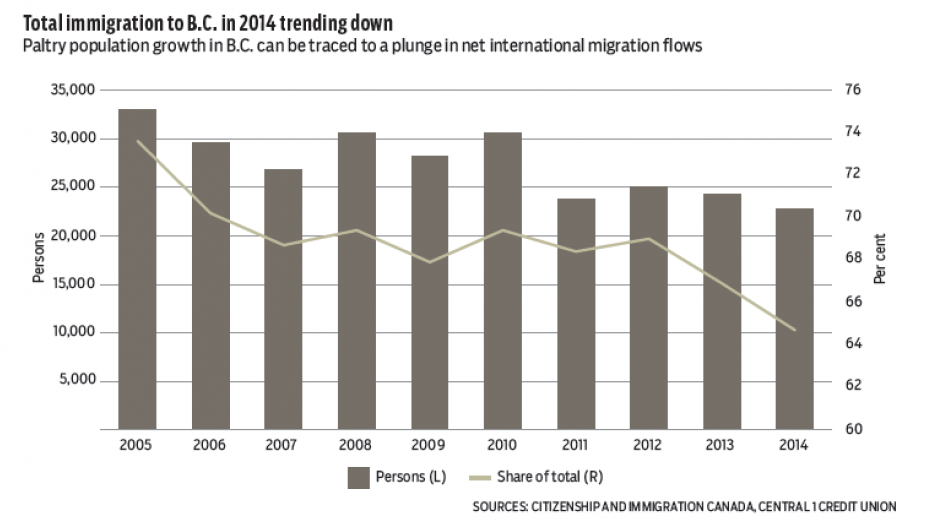B.C.'s population growth was disappointing for a second consecutive quarter, potentially weakening some of the resilience of household demand.
According to Statistics Canada’s latest quarterly estimate, the provincial population base expanded to 4.68 million as of July 1, up 1% from the same time in 2014. While this was only slightly lower than the 1.1% reading observed in April, the underlying population growth trend has decelerated sharply.
Adjusted for seasonal factors, annualized growth in the second quarter fell to 0.8%, which, along with the first-quarter trend, was the weakest since 2013’s third quarter.
Paltry growth can be traced to a plunge in net international migration flows. While still contributing positively to population growth, net international migration fell 55% compared with the same quarter in 2014 and has slowed dramatically since the third quarter.
Most of this can be attributed to a decline in non-permanent residents, which could reflect the well-documented reforms to the temporary foreign worker program.
More concerning is a further drop in the number of permanent resident immigrants to the province in recent quarters. Through 2015’s first half, inflows fell 19% from a year ago. Annual permanent resident inflows were down 3% in 2014 but have generally hovered near 35,000 to 36,000 since 2011 – already significantly lower than the 40,000-plus arriving during 2008-10. In contrast, estimated emigration to other countries has generally held steady.
Citizenship and Immigration Canada data through 2014 points to a sharp decline in immigration from Asia and Pacific region countries since 2010, driving a drop in share of total immigration to 65% last year from 69% in 2012. 2014 flows from the region were the lowest going back to at least 2005.
Inflows from Europe and the U.K. edged higher in 2014 but are well below 2010 levels, which likely reflects poor economic conditions across the Atlantic. Further weakness this year may reflect economic weakness in China and other emerging markets and the termination of the immigrant investor program.
International migration is the principal driver of population growth in B.C. and recent trends have disappointed, but improving interprovincial flows are providing some mild offset.
Net interprovincial migration is trending at the highest levels since 2007 as inflows surge.
Relatively stronger economic growth trends in B.C. combined with recessionary conditions in Alberta and broader lifestyle and retirement trends are driving residents to the West Coast. •
Bryan Yu is senior economist at Central 1 Credit Union.




